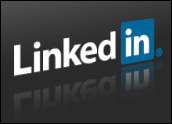
LinkedIn revealed revamped search features this week, making it easier for professionals to identify and engage with possible contacts on the networking site.
The company added auto-complete and suggested search functions designed to give LinkedIn users a more complete set of results. For instance, if someone types “product manager” into the site’s search box, they might receive prompts to look for related jobs or some of the term’s top results.
The social network designed for professionals also upgraded its advanced search options, now allowing users to search for contacts via their company, location, school and other factors.
Users now can save their past searches and get an e-mail alert when the results change.
The new features offer personalization, LinkedIn said in a blog post announcing the updates. The company noted that “no two professionals are alike,” and claimed the revamped search would use data such as existing user contacts and profession to customize query results.
LinkedIn’s new search features place it more in line with competitors in the social media landscape such as Facebook. The world’s largest social network recently rolled out Graph Search, designed to be more like Google or Bing searches that respond to users’ natural language queries.
The LinkedIn updates began rolling out to members on Monday, and the company said it should be available worldwide within the coming weeks.
LinkedIn did not respond to our request to comment for this story.
Keeping Up With the Times
LinkedIn’s revamped search functions were a much-needed overhaul, said Brent Csutoras, social media consultant at Kairay Media.
Other than focusing on the professional side of the social networking space — it hosted 5.7 billion professional searches in 2012 — LinkedIn isn’t typically known for being an innovative site. Its new search features and better networking feel might be a few steps behind Facebook.
“If you look at what LinkedIn has done over the past two years, they seem to take what everybody else is doing and then put it out shortly afterwards,” Csutoras told TechNewsworld. “In some ways that’s okay, but in other ways where they were trying to be more social — like allowing you to recommend people — it ended up being a complete failure.”
For this set of refreshes, though, LinkedIn is more in tune with what its users need on a professional networking site.
“This is the first update they’ve done that’s been actually beneficial to the user,” he noted. “It was long overdue to help people find what they need without having to know exactly how it’s organized. That is very valuable for users of LinkedIn in particular. It’s annoying to have to search for careers or jobs or people multiple different ways, and then still not be able to find anything.”
Staying Professional
Although the advanced search features are a huge help, the site needs to make sure staying professional is a priority, said Csutoras.
If the company is encouraging too much engagement on the site, it could start to look more like a Facebook, where “friends” might be simply acquaintances and not actual professional recommendations, he said. At that point, LinkedIn runs the risk of losing its identity as the site where jobs are found and careers are enhanced.
“It used to be that you could really trust the connections people had on LinkedIn,” Csutoras pointed out. “But now that even second and third connections can connect with each other, it is starting to mean less. The site shouldn’t be forcing and pushing people to make connections with anyone, because they need to keep that level of trust alive.”
The balance between staying professional and engaging users enough to draw ad revenue to the site is a tough one to strike, said Lauren Formalarie, senior social analyst at Say It Social. However, it needs to be a priority for the network.
“LinkedIn runs a huge risk of losing the type of audience that has helped it build its reputation by becoming more like a social network and less of a professional hub,” she told TechNewsWorld. “Constant improvement and change is a necessity for any social network, but the improvement of the qualities that make each one unique and different from the other is the direction they must go in.”




















































